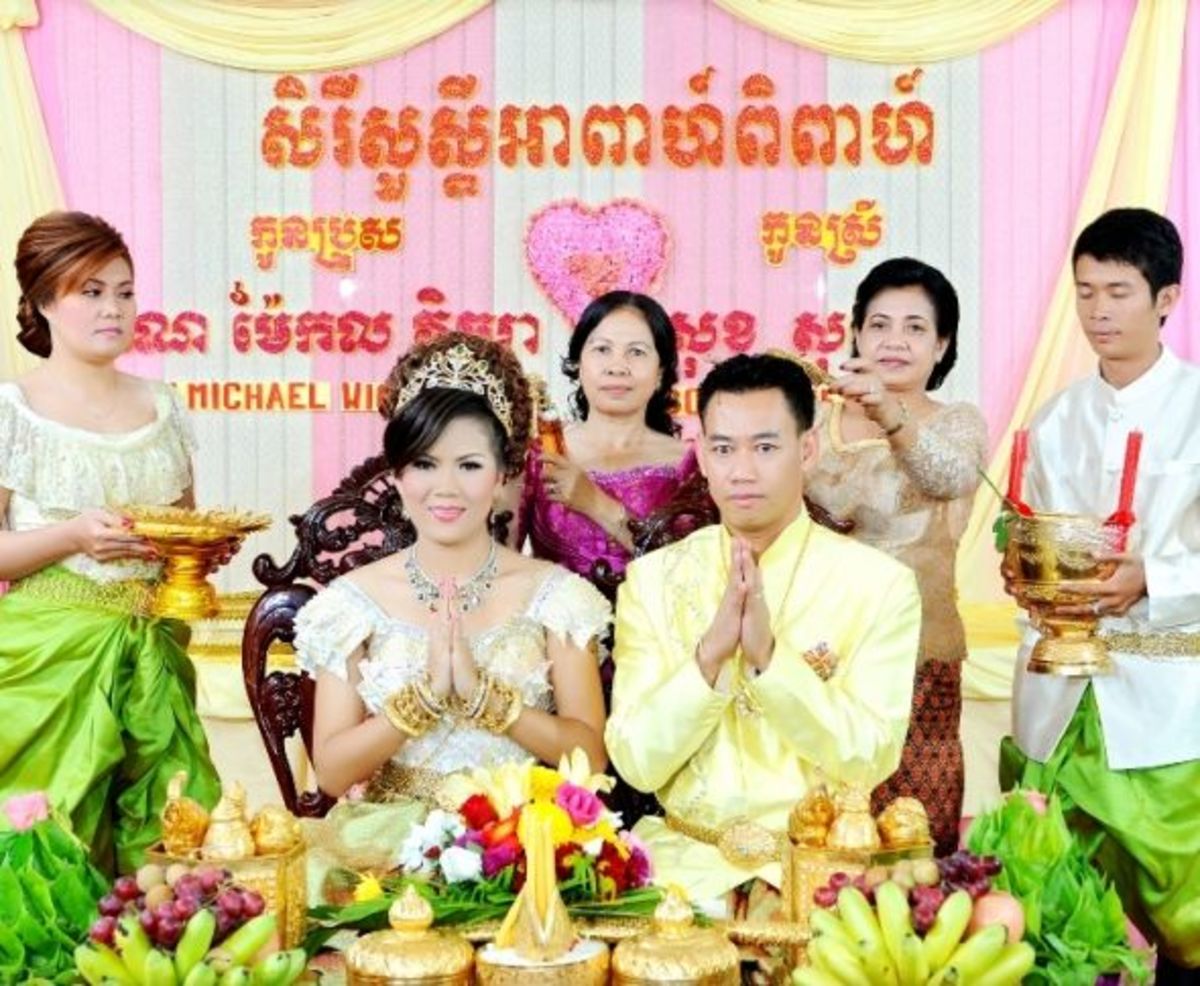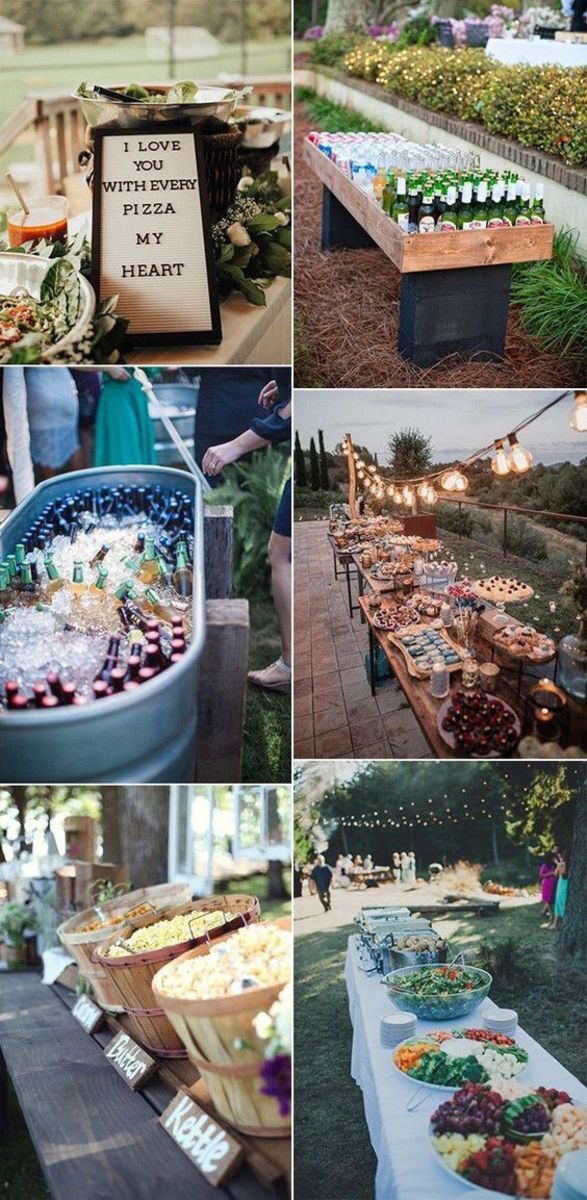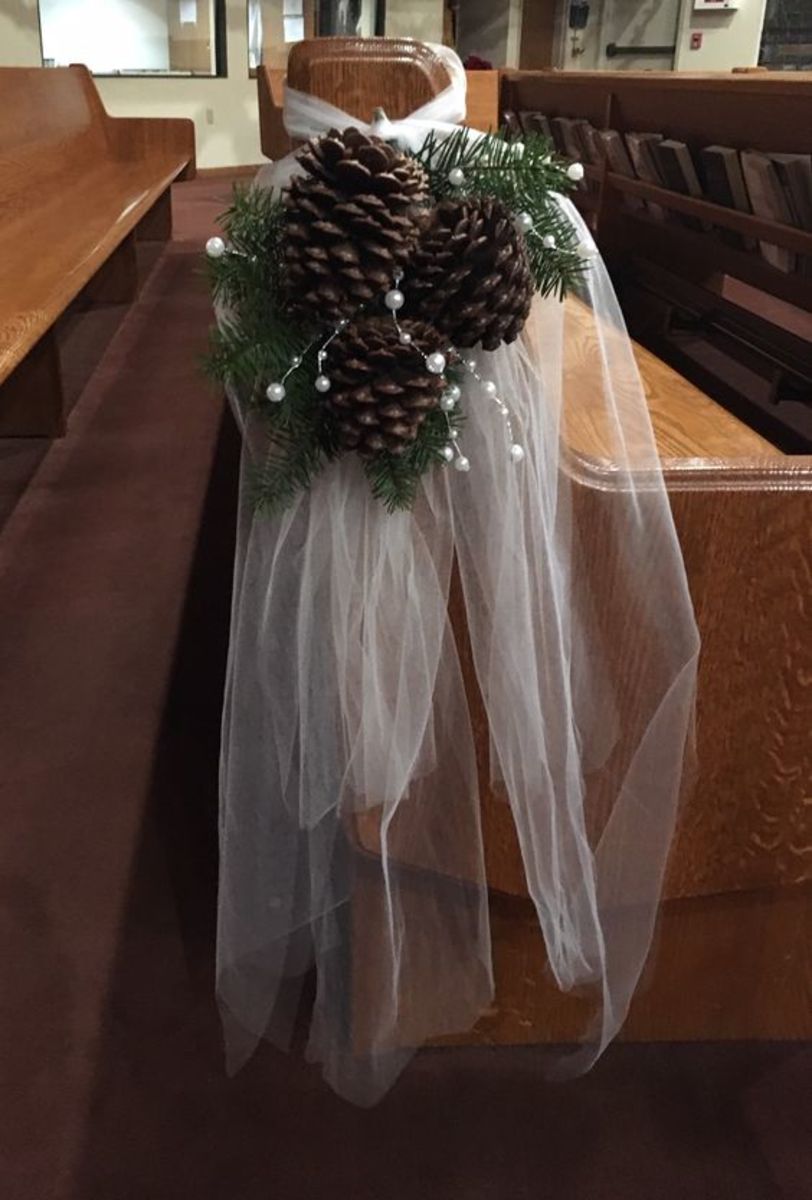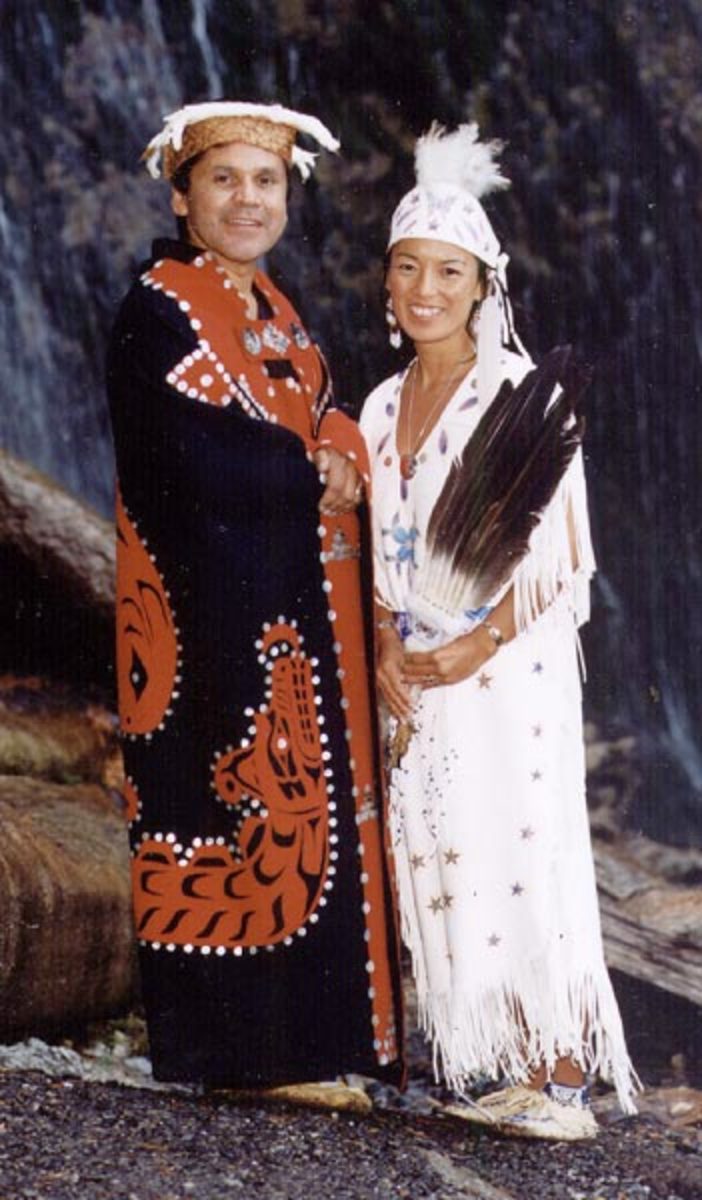Guide To Wedding Invitations
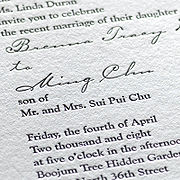
Wedding Invitation Etiquette Can Be Complicated
Weddings are momentous occasions, and one of the ways that this is expressed is through adherence to traditions and respect for customary form. Nowhere is this more true than in the wording of the wedding invitations. Etiquette has very specific and precise rules about the way in which invitations should be written. To stray from the proper form may appear awkward or uncouth; worse yet, unintentional offense may be caused by a carelessly worded invitation. There is a special form for almost every conceivable family situation, from divorced parents to second time brides to bilingual families, and much much more. This is a comprehensive guide to help you find the perfect wedding invitation wording for your own unique circumstances.
Traditionally, wedding invitations were always issued by the bride's parents. Even as young ladies are waiting until they are older to get married and are often leading independent lives, it is still customary and proper for her parents to host the wedding and to give her away in marriage. It is very important to understand that naming someone as the official host or hostess on a wedding invitation is a matter of honor and respect, not a way of telling the guests who is paying the bills. It would be entirely proper, for instance, for a wedding invitation to be issued in the names of the brides parents even when the bride and groom are the ones actually paying for the wedding expenses.
Pearl Bridal Jewelry
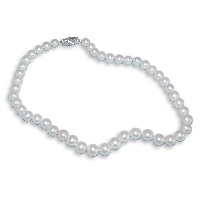
Wedding Invitation Style Sets Tone of Wedding
The style of your wedding invitations will set the entire tone for your wedding. When your guests receive your invitations in the mail, it will be the first glimpse that they get into what your wedding will be like. If your wedding is traditional or formal, your invitations should reflect that. For example, if you are planning a church ceremony followed by an evening wedding at a conservative country club, the appearance and wording of your invitations should be completely classic and traditional as well. Even though we lead very different lives than our mothers and grandmothers, when it comes to a wedding, the traditional can often be best, whether it takes the form of wearing your mother's set of bridal jewelry or lettering your invitations in the same manner as your mother and grandmother did before you. This is a time to follow both the letter and spirit of etiquette; you can be creative and original with the rest of the wedding design.
The most traditional style of wedding invitation reads as follows:
Mr. and Mrs. William Charles Talbot
request the honour of your presence
at the marriage of their daughter
Kelly Leigh
to
Mr. Robert Henry Chamberlain
Saturday, the fifth of September
Two thousand and nine
at one o'clock in the afternoon
Saint Anne's Church
Westport, Connecticut
Who Is Doing The Inviting
There are a number of important things to note about this traditional wedding invitation wording. First of all, it assumes that the brides parents are married. If they were not, their names would be separated onto two lines like this: Mrs. Elizabeth Green Talbot / Mr. William Charles Talbot. If the bride's mother has not remarried, she would list her name as in the above example: Mrs. (never Ms. in a social setting), followed by her first name, maiden name, and ex-husband's surname. When the bride's mother has remarried, the proper way to write her name reverts to the formal form, using her new husband's full name; in other words, she would be Mrs. Michael Randolph Harriman. The second line would still be the bride's father's name. Please note that there is no joining word such as "and" between the two lines, as it would make it appear as though the bride's parents were still married (and can properly be used in the situation where the bride's parents are married but have different names).
The Request Line
After the line that lets readers know in whose names the invitations have been issued, we come to the request line. "Request the honour of your presence" indicates that the ceremony will take place in a house of worship. If the ceremony will be conducted in a secular location, that line should read "Request the pleasure of your company", even if the service will be officiated by a clergyman. Most brides prefer the British spelling "honour", but the American "honor" is equally appropriate. Just be certain that if you use the word "favour" or "favor" in the response line of the invitation, that you are consistent in either adding in the extra u or omitting it.
Following the line "at the marriage of their daughter" (or the marriage of "his" or "her" daughter, if the invitation was issued by only the bride's father or mother), comes the name of the bride. Traditionally, it is listed as only her first and middle names, without any title or surname. This form works just fine when the bride has the same last name as her parents, but in today's world of blended families and changing names, it may not provide enough information. In this situation, the bride's full name would be listed, as in Kelly Leigh Draper.
Ah, you may be wondering, what if Kelly Leigh Draper is actually Doctor or Lawyer Draper, shouldn't her title appear on the invitations? Actually, the most correct answer is no, a lady does not use her professional title in a social setting. However, since it is perfectly acceptable for a groom to be addressed as "Doctor" instead of "Mr.", these days most brides will use that designation as well. This applies only to medical doctors; Ph.Ds should omit the title, and no professional degrees, such as M.D. or D.D.S. should be used by anyone on the invitation. Additionally, it is considered tacky for an attorney to tack the honorific "esquire" to the end of his or her name. The only professional designations that should be used are Doctor, Reverend, Judge, or military rank.
After the bride's name comes the linking word, which is usually "to". One exception to this would be for a Jewish ceremony, in which the word "and" is substituted, as it is believed that the bride is not wed "to" the groom, but rather they are joined in an eternal union by God. For a similar reason, Catholic Nuptial Masses will also use "and" as the joining word, but this is not the case for a regular Catholic wedding ceremony.
There is little variation about the listing of the groom's name, except in the case illustrated above, so that part at least is straightforward. When the groom is a junior, it is added to the end of his name with a comma, as in Mr. Robert Henry Chamberlain, junior (or Jr.). If the groom's father has passed away, it is not necessary for him to use the junior designation. A groom who is a III, can also include it at the end of his name.
You may notice that the groom's parents are not mentioned in the traditional wedding invitation. This is correct, as invitations were normally issued by the bride's parents. However, if you would like to include the parents of the groom, additional lines would be added beneath the name of the groom reading: son of / Mr. and Mrs. Gregory Robert Chamberlain. The version which includes the names of the groom's parents is always the correct form for a Jewish wedding. Should the parents of the groom be divorced, one would use the same wording as for divorced parents of the brides. You had also better plan on choosing an oversized invitation, as you are going to have quite a few lines to fit on it!
Once the "whos" and the "what" have been handled, it is time to move on to the "when" and the "where". As wedding invitations are formal, words should always be spelled out, and numerals should be avoided. Just as the correct title would be "Doctor", not "Dr.", the date should be written as the "fifth", rather than the 5th. The inclusion of the year is optional. Many people do, because it makes a nice keepsake, but it is not mandatory. The time is also written out, with "o'clock" being preferred over "am" or "pm". Including "in the afternoon" (or morning or evening) is also optional, although personally I think that it looks better to use it, as it will keep the line a more consistent length with the one above it.
The location of the ceremony is the final section on a standard wedding invitation. The full and complete name of the site should be used (although if your church has a very long name, you may find it necessary to abbreviate "Saint" to "St."). When the service will be held at a location other than a house of worship, simply list the name of the venue in the same manner, for instance: The Westport Yacht Club. If the wedding will be at a private home, the address of the house should be used. For a public venue, it is acceptable to omit an address, although for a big city wedding, your guests might appreciate the additional information. The city and state should be spelled out in full; avoid abbreviations like "Westport, Ct.". Two American cities have their own customary way of being written; for New York City, it is considered sufficient to write New York, without the state, and for Washington, D.C., you can properly use Washington, District of Columbia or The City of Washington.
Wedding Reception - R.s.v.p- other details
When the reception is being held at the same location as the ceremony, you have the option of including another line on your wedding invitations that reads: and afterwards at the reception. If you plan to hold your reception at a second location, it is generally better to include a separate reception card. This prevents the wedding invitation from getting to be overly long, especially when you have already had to squeeze in lines for two sets of divorced parents! The reception card is a smaller card that is included with the main wedding invitation. The wording looks like this:
Reception
immediately following the ceremony
The Westport Yacht Club
Westport, Connecticut
The favour of a reply is requested
If you prefer, you can use R.s.v.p. instead of "The favour of a reply is requested". The initials stand for the French phrase "Répondez s'il vous plaît", which simply means "please reply". Many people will make the error of writing R.S.V.P. in all capital letters, but that is an error. Another alternative is to enclose a separate response card with a self-addressed and stamped envelope. This is common practice these days, although using a response card is not technically proper, as it can be considered an insult to your guests (the implication is that they would not otherwise have the good manners to write a reply to a formal invitation). Feel free to omit the response cards and include the R.s.v.p. line on the reception cards or the wedding invitations instead. If your wedding will be black tie, the phrase "black tie" is added to the lower right hand corner of the wedding invitation or as the last line centered under the city and state on the reception card, if you are using one.
Exceptions To The Traditional Wedding Invitation
There are many circumstances in which the standard wedding invitation wording does not quite apply. As many couples wait to get married until they are older and more established, the practice of acting as the hosts of ones' own wedding has become much more commonplace. The wedding invitation changes to reflect this as follows:
The honour of your presence
is requested at the marriage of
Miss Kelly Leigh Talbot
to
Mr. Robert Henry Chamberlain
etc.
Notice that the couple does not actually list themselves as hosts. For a less formal wedding, it would be acceptable for the couple to word the invitation as such:
Miss Kelly Leigh Talbot
and
Mr. Robert Henry Chamberlain
request the pleasure of your company
at their marriage
etc.
If the bride has been previously married, her name would be changed to Kelly Talbot Ferguson (first, maiden, ex-husband's surname if she uses it) or simply Kelly Leigh Talbot with no title. It was customary for a divorced woman to use the title Mrs., just as her divorced mother would, but frankly it looks wrong for the bride to be shown as an already married woman. Notice that Ms. is not considered to be an appropriate alternative; it is better to omit a title altogether. Consistency is important, so if no title is used preceding the bride's name for a self-issued invitation, then the groom's name should not have one either. By the way, if the groom has been previously married, but the bride has not, it is still perfectly fine for the wedding invitation to be issued in the traditional format with her parents as hosts. When it is the bride who has been divorced, however, the invitation must be issued by the couple, even if it is the first marriage for the groom.
Another special circumstance is a double wedding. This festive occasion has its own wedding invitation wording. It is important to send out one invitation that mentions both marriages; otherwise the guests for each half of the wedding will be left to wonder who on earth that other bride could be! The name of the older sister is listed first, and the invitation should say:
Mr. and Mrs. William Charles Talbot
request the honour of your presence
at the marriage of their daughters
Kelly Leigh
to
Mr. Robert Henry Chamberlain
and
Susan Rachel
to
Mr. Thomas Franklin Hughes
etc.
There are other special circumstances that you may wish to cover in your wedding invitations. Bilingual ceremonies are becoming more common, for instance, and they have their own invitation format. A large bi-fold invitation would be used, and the message would be printed on the left side in Spanish and the right side in English. In Hispanic weddings, it is customary for the names of the groom's parents to be included as well as the bride's. For a Jewish wedding service, it can be nice to create a dual English and Hebrew invitation; in this case it is the English version that goes on the left, and the Hebrew would be on the right hand side. Once again, the groom's parents should be named.
Should A Deceased Parent Be Listed On the Invitation?
A few other delicate questions frequently arise when it comes to the correct way to write a wedding invitation. One of these is how to include a deceased parent. Unfortunately, there is no proper way in American culture for a person who has passed away to issue an invitation to a social event (although there is a form for it in Latin America). The remaining parent should be listed as the solo host on the invitation, and the parent who has passed away can be remembered and honored in the newspaper announcement and the wedding programs. The last thing that you would want is for your guests to open your invitation, and say, "Mr. Young is giving his daughter a wedding? Didn't he die five years ago?".
Including Step-Parents: Harmony Trumps Etiquette
The other sticky situation than is very common today is what to do about step-parents on a wedding invitation. The technically correct answer is that only the bride's natural parents are listed, unless she was truly raised by a step-parent. If this is likely to cause hard feelings, however, step-parents can be included as hosts. The invitation would be amended to state:
Mr. and Mrs. Michael Randall Harriman
Mr. and Mrs. William Charles Talbot
request the pleasure of your company
at the marriage of their daughter
etc.
Always remember that etiquette is important, but the feelings of loved ones matter even more. When including the name of a step-parent on your wedding invitation will promote family harmony, by all means do it.
These are the basic forms that wedding invitations take. There will always be couples who want to write something clever or sappy, but there is no form to follow, as they are not traditional formal invitations. With this guide in hand, you will be prepared to determine the proper invitation wording for your wedding and to create a beautiful invitation that will make an excellent first impression on your wedding guests.



